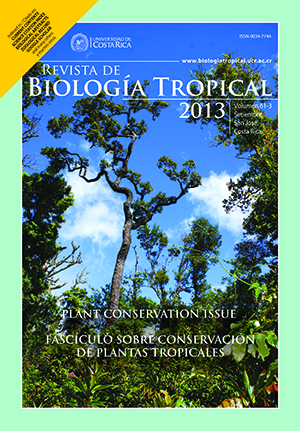Abstract
The advancing agricultural frontier has led to an important loss of natural habitats, with significant consequences for biodiversity. The demography for two species of anurans, Physalaemus biligonigerus and Rhinella arenarum, both associated with agricultural systems in the central region of the Córdoba Province, were analyzed and compared in this study. Four sites were sampled: three agroecosystems with different alteration degrees (C1, C2 and SM1) and a fourth site not cultivated (SM2). The sampling was conducted during two reproductive periods, from September 2008 to April 2009 and September 2009 to April 2010. Individuals were captured using live pitfall traps for the metamorphic, juveniles and adults; and visual encounter survey, for the capture of eggs and larvae. With the abundance data, the survival for each age class was estimated using the KNM method (Kiritani Nakasuki Manly). With survival rates and fertility population, Leslie matrices were elaborated to obtain a quantitative projection of the population size. Altered environments showed lower eggs and larvae survival. Population projections were favorable in the site SM2 and were less favorable and a tendency to extinction, in sites dominated by crops. This study showed that the agroecosystems of this region are possibly inhospitable environments for reproduction and survival of the species studied. The aquatic stages in the life cycle of both species would be the more affected, since water bodies deterioration is present or may occur in those areas. We can recognize species-specific effects of agricultural ecosystems; P. biligonigerus was the most affected species, possibly because of their life histories and habitat requirements. We suggested that environmental degradation caused by the cropland in the central region of Argentina would impact on the demographics of the anuran populations in the area.Comments
Downloads
Download data is not yet available.






